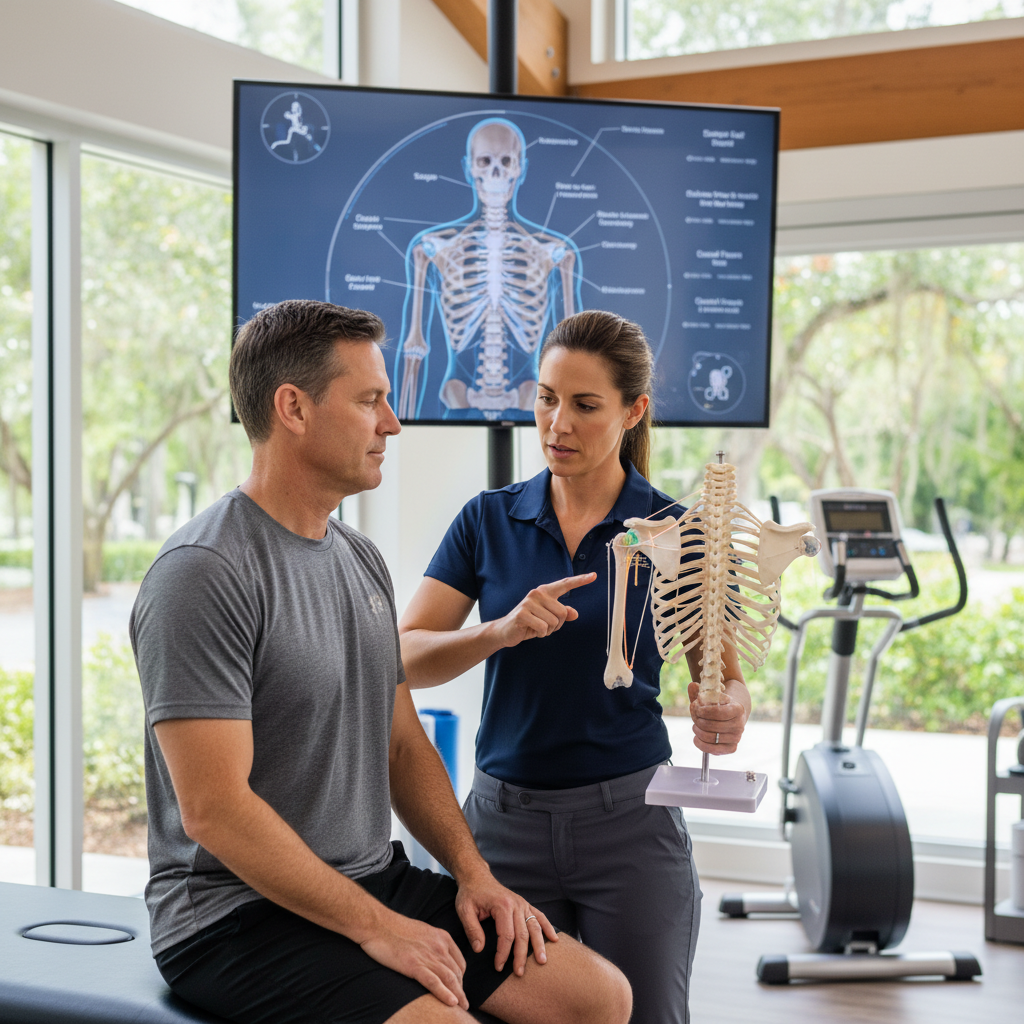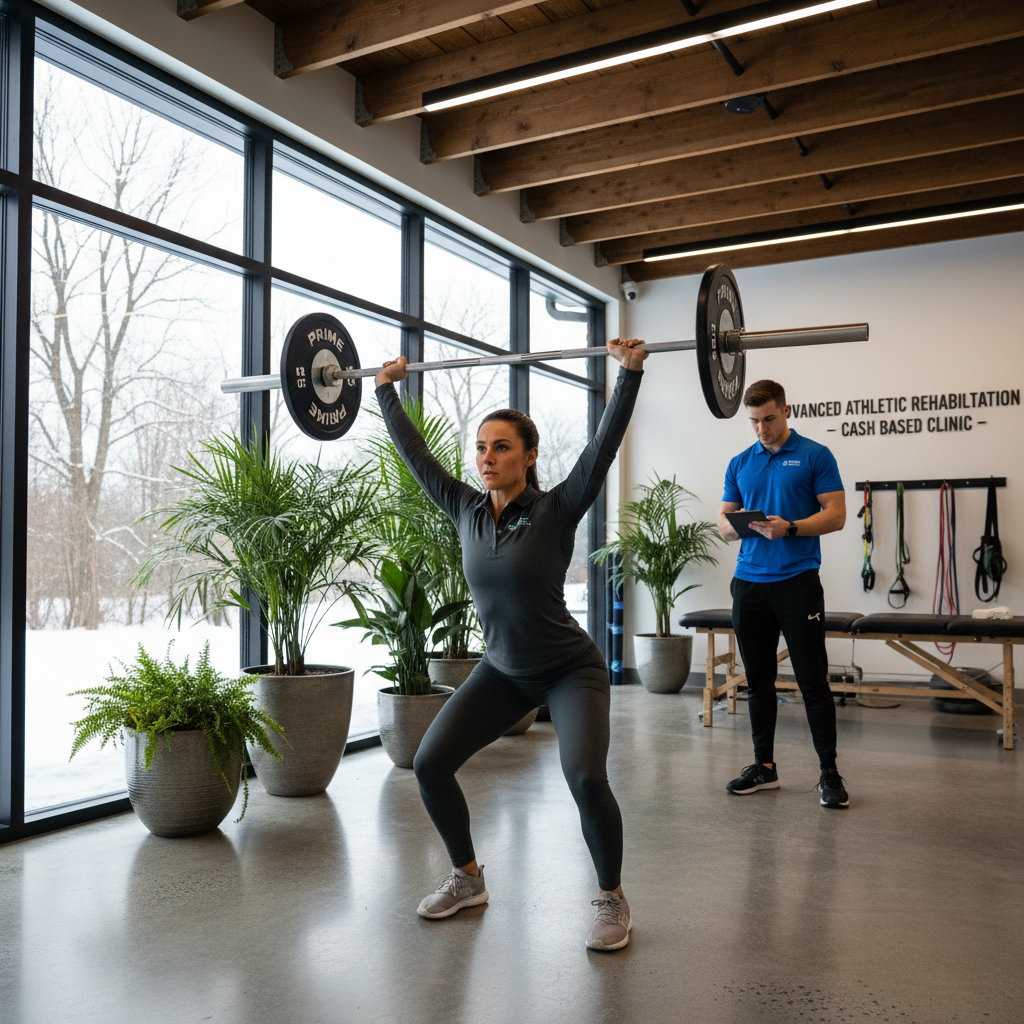Low back pain can feel like a betrayal for dedicated lifters. You spend countless hours perfecting...
How to Improve Shoulder Mobility for Overhead Lifting
Struggling to hit depth in your overhead squat? Do your snatches feel unstable, or does pressing a barbell overhead cause a pinch in your shoulder? If you're an active adult, especially a CrossFit enthusiast, you know that overhead movements are a cornerstone of performance. But when your shoulder mobility is limited, you're not just sacrificing weight on the bar—you're putting yourself at risk for injury.
Poor shoulder mobility is one of the most common roadblocks we see at Core Values Physical Therapy. It forces your body into unsafe positions, leading to compensations in your lower back and inefficient movement patterns. The good news is that you can improve it. This guide will walk you through why your shoulders might feel tight, how to test your mobility, and what you can do to start unlocking your overhead potential.
What Limits Overhead Shoulder Mobility?
Getting your arms fully overhead isn't just a function of your shoulder joint. It's a complex movement that requires coordination between your shoulder blade, thoracic spine (mid-back), and several key muscle groups. When one part of this chain is restricted, the whole movement suffers.
Here are the most common culprits:
- Tight Latissimus Dorsi (Lats): Your lats are large, powerful muscles that run from your mid-back down to your pelvis and attach to your upper arm. When they're tight, they pull your arm down and inward, physically blocking you from reaching a stable overhead position.
- Stiff Thoracic Spine: Your mid-back needs to extend (flatten) to allow your shoulder blades to rotate upward properly. If your thoracic spine is stiff and rounded, your shoulder blades can't move freely, forcing you to compensate by arching your lower back—a recipe for instability and pain.
- Tight Pectoral Muscles: The muscles in your chest, particularly the pec minor, can pull your shoulders forward into a rounded posture. This internal rotation fights against the external rotation your shoulder needs to move safely and efficiently overhead.
- Weak Rotator Cuff and Scapular Stabilizers: Mobility isn't just about flexibility; it's about control. If the small muscles that stabilize your shoulder blade and control the shoulder joint are weak, your body may intentionally limit your range of motion to protect itself from instability.
 A Simple Self-Assessment for Shoulder Mobility
A Simple Self-Assessment for Shoulder Mobility
Want to see where you stand? Try this quick test against a wall. It's a simple way to expose limitations in your overhead position.
The Wall Angel Test:
- Stand with your head, upper back, and tailbone flat against a wall. Your feet should be a few inches away from the base.
- Tuck your chin slightly and try to flatten your lower back against the wall, engaging your core to prevent it from arching.
- Raise your arms into a "goalpost" position, with elbows bent at 90 degrees and the backs of your wrists and elbows pressed against the wall.
- Slowly, and with control, slide your arms up the wall toward the ceiling, trying to maintain all points of contact: your head, upper back, tailbone, elbows, and wrists.
If your lower back arches, your elbows or wrists lift off the wall, or you feel significant pinching, you've likely found a mobility restriction that needs to be addressed.
Key Stretches and Exercises to Improve Mobility
Consistency is key to making lasting changes in your mobility. Incorporate these movements into your warm-ups or cool-downs to start addressing the common restrictions.
Thoracic Extension on a Foam Roller
This exercise directly targets stiffness in your mid-back, which is essential for unlocking your overhead position.
- Lie on your back with a foam roller placed under your upper-mid back.
- Support your head with your hands, keeping your elbows pointed toward the ceiling.
- Keeping your core engaged and your hips on the ground, gently extend your upper back over the roller.
- Hold for a breath, return to the starting position, and roll slightly to a new segment. Perform 8-10 slow extensions.
Doorway Pec Stretch
This classic stretch helps open up a tight chest and counteracts the effects of rounded shoulders.
- Stand in a doorway and place your forearms on the frame, with your elbows bent to 90 degrees and at shoulder height.
- Gently step forward with one foot until you feel a comfortable stretch across your chest.
- Keep your core engaged to avoid arching your back. Hold for 30 seconds and repeat 2-3 times.
Overhead Lat Stretch with a Band
This stretch targets the lats, which are often a primary limiter for reaching overhead.
- Kneel on the floor and grab a resistance band anchored overhead.
- Sit your hips back toward your heels, letting the band pull your arm forward and up.
- Allow your armpit to open up and breathe into the stretch you feel along the side of your body. Hold for 30 seconds on each side.

The Role of Professional Guidance
While these exercises are a fantastic starting point, a generic approach can only get you so far. If you're dealing with persistent pain, a significant difference in mobility between your left and right sides, or you're simply not seeing progress, it's time to seek professional guidance.
A physical therapist at Core Values Physical Therapy can provide a detailed diagnosis to pinpoint the exact source of your limitation. We don't just give you stretches; we identify whether the root cause is muscle tightness, joint capsule restriction, nerve tension, or muscular weakness.
For our CrossFit athletes, we offer specialized CrossFit movement assessments where we analyze your form during specific lifts like the snatch and overhead squat. This allows us to create a highly personalized treatment plan that addresses your unique movement patterns, corrects compensations, and helps you build the strength and control needed for safe, powerful lifting.
Unlock Your Overhead Potential in Winter Garden
Don't let poor shoulder mobility hold back your performance and put you on the sidelines. Understanding what's limiting your overhead lifts is the first step, but taking targeted action is what creates real change. By consistently working on your thoracic spine, lats, and pecs, you can build a more stable and efficient overhead position.
If you're tired of guessing and want a clear, expert-led plan to crush your goals, we're here to help. Schedule a comprehensive assessment with the specialists at Core Values Physical Therapy in Winter Garden today. Let's work together to eliminate your limitations and unlock your full potential.

